After the capture of Berlin in May 1945, the bodies of two ‘Hitlers’ were found by a special squad of NKVD in the courtyard of the Reich Chancellery. One, with a bullet hole in his forehead, was sent to Moscow, where experts determined that he was the Führer’s double. The charred body of the second ‘Hitler’ could not be identified. Over the next three decades, the remains were examined by experts, but to no avail. In the 1980s, with the collapse of the socialist camp, Soviet occupation troops left Europe. In East Germany, a special group of KGB officers, on the orders of their chief, Andropov, burned the remains and dumped the ashes in the local river, the Biarritz.
Over the years, speculation, fiction, and versions have multiplied. As reported by the then head of the FBI, J. Edgar Hoover. Edgar Hoover, there was nothing in the secret documents to indicate that Hitler was dead. If the Führer had fled, what changed his vow to die for Germany? After all, when he came to power in 1933, he had sworn allegiance to the people who had elected him until his death.
But in April 1945, days before the collapse of his Reich, the leader of the German people disappeared. He was no coward and could have shot himself to avoid falling alive into enemy hands.
Decades have passed. Many secret documents have been declassified. After analyzing the FBI’s public documents, former UN war crimes investigator John Cencich became convinced that the Führer of the Third Reich was alive. Before him, the head of the FBI, J. Edgar Hoover, was convinced. Edgar Hoover. So was Stalin, who searched for Hitler until the last days of his life. It seems that the vanished Hitler remained a bogeyman for all Bolsheviks, forever.
But if the Führer escaped from besieged Berlin in the last days of April 1945, who helped him in that?
This was the last mission of the Gestapo chief and is described in his diaries. Recruited by the Secret Service after the war, the general flew across the ocean. He landed in Washington, D.C., where he became a special adviser to the president and helped purge the U.S. government of Stalinist spies during the Cold War. After the general died in the early 80s, his diaries fell into the hands of a prominent journalist, and a California publisher once published some of the information from them.
I was fortunate enough to buy what was published. Further publication was stopped by the secret services because the diaries contained scandalous information on many politicians.
***

Blue skies and the fragrant breeze of a sparkling ocean. The winds of the Western Sahara, just 50 miles east of this island, drive a frothy wave, luring boys and girls to ride its crest. The golden sands of secluded beaches and the hot sun overhead. This is Fuerteventura, the longest of the Canary Islands.
The secluded harbor on the Jandia Peninsula was called Puerto de Cabras, or “goat harbor” by the locals. This was because there were more goats there than people. Before World War II, this part of the peninsula was fenced off and sold to a local company, Dehesa de Jandia S.A. All the local inhabitants were evicted.
During his expeditions to the New World, Columbus was the first to realize the strategic importance of the Canary Islands. Four centuries later, Admiral Canaris also appreciated them. In 1938, he suggested to his Führer that the islands be used as an intermediate base for submarines. Hitler ordered Göring to gather information, and in July a ‘fishing expedition’ to the islands was organized. The chief ‘fisherman’ was to be Gustav Winter – an engineer and experienced Abwehr agent.
Gustav was born in May 1893 and was educated in Hamburg. At age 20, he traveled to Patagonia, but with the outbreak of war in Europe, he decided to return home. On the way, however, the transport was captured by the British and Winter was sent to Portsmouth prison. A year later, he escaped and made his way to a Dutch merchant ship that was preparing to sail to Spain.
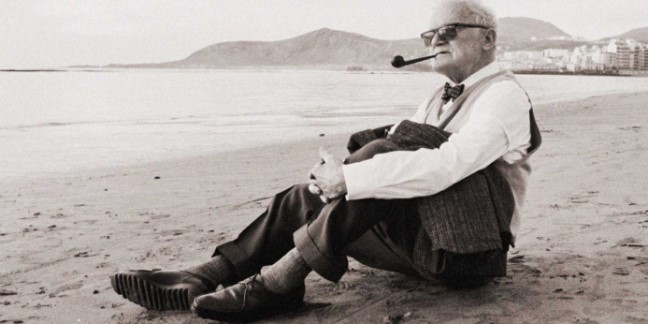
In Spain, Winter went to the British Consulate. Speaking fluent English, he convinced the consul that he was a British subject and needed money to return home. The money he received helped him to return… to Germany. With the end of the war, Gustav Winter lived and spied in Spain until 1937, occasionally traveling to Berlin for instructions.
The two-month expedition organized by Göring was not enough for Winter to complete his work. He decided to explore the Canary Islands on his yacht ‘Argon’. He did this for three more years, studying the islands’ features, poring over scientific books, and working with the maps of geologists and seismologists. He climbed the mountains with all their volcanic craters and dived into the caves of the rocky coasts. After three years, Winter knew all there was to know about the islands and asked for funding.
In 1940 there was another war in Europe and Spain was neutral. Winter bought 45,000 acres of the desolate rocky peninsula of Handia on the island of Fuerteventura. To avoid arousing the unhealthy interest of the authorities, Winter used a Spanish front company.
After the European war became the Second World War, the Allies, meeting in Casablanca in January 1943, sent an ultimatum to Germany, Italy, and Japan, forcing them to surrender. The political situation forced Winter to speed up the construction of the Fuerteventura complex. Soon, after the subsequent capitulation of Italy and major defeats in Russia and North Africa, the Nazis saw the Canary Islands as a bridge to Argentina, which Goebbels called the “Fourth Reich”. The first Nazi military base was already in Gran Canaria, near Las Palmas. It included the Gando airport and a submarine base. Now it was Fuerteventura’s turn.
Disguised as a villa, the complex was built in secret by political prisoners from the concentration camp set up on the island after the Spanish Civil War in 1937. Caudillo Franco personally signed all the building permits. The complex included underwater parking caves for submarines, an airstrip capable of accommodating a four-engined Junkers Ju 290, holiday homes for submariners, a hospital and full medical service, a restaurant, and a brothel. The basement of the villa had walls up to two meters thick. From there, a long tunnel ran through the rock. It connected the complex to the submarine dock. A massive tower with an unusually large electrical deflector was built on the site of the villa, apparently for signaling to the sea.
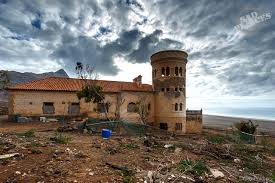
***
DOUBLE.
After heavy losses in North Africa and at Stalingrad in 1943, the German command began drawing up a plan to evacuate the Reich’s top officials, scientific personnel, and archives of vital technical documentation in the event of Germany’s defeat in the war.
Martin Bormann’s brother Albert was put in charge of pumping money and Reich technology into neutral countries as potential safe havens. A skilled financier, he worked unnoticed by the world bankers who controlled the flow of money and implemented complex schemes for withdrawing assets.
In an operation codenamed “Flight of the Eagle”, Albert Bormann opened countless bank accounts in many countries. In Argentina alone, between 1943 and 1945, around a hundred German companies were set up with this money, including the first foreign branch of the “Mercedes-Benz” concern. Then there were 58 companies in Portugal, 112 in Spain, 233 in Sweden, 234 in Switzerland, 35 in Turkey, and an unknown number in the United States, South Africa, and elsewhere.
A separate project was ‘Operation Tierra del Fuego’, which was Hitler’s escape plan.
In the southern province of Argentina, the town of San Carlos de Bariloche, once visited by Canaris fleeing the British, had been a center of German settlement since the nineteenth century. This town, with a population sympathetic to the German Fuehrer, was to be his refuge. Gestapo chief Heinrich Müller was put in charge of the secret part of the plan.
In the world of politics, it is customary to replace the main leader of a country with a double if there is a threat of assassination. Any ruler will always have people who are dissatisfied with his regime. The Gestapo identified Adolf Hitler’s double as early as 1941.
It turned out to be a certain Gustav Weber, who worked in the printing house of the city of Breslau, a native of Austria, a very distant relative of Hitler’s who had no idea of his connection with the Führer. From that moment on, the doppelganger’s life belonged to Germany and was in the hands of the Gestapo, in particular Gestapo chief Muller.
Gustav Weber disappeared and he became the only student at the secret university. In total secrecy, the doppelganger took a special course and studied one subject – the life and habits of Adolf Hitler. Weber was weaned off smoking, forced to lose extra pounds, taught how to walk, how to express Hitler’s emotions in public, the Fuhrer’s daily habits, and all the details of his behavior. The double also studied military science – he was taught to read a map of military operations and to memorize the names of generals and personalities from the Führer’s private life and inner circle.
The original and the double never met, Weber was shown Hitler from a distance. No one in the Führer’s inner circle knew of the double’s existence. Not even the ubiquitous secretary Bormann and personal friend Goebbels knew.
n 1941, Hitler, aware of his double, was skeptical about the project. But by 1943, the German army’s offensive on the Eastern Front was running out of steam and Stalin’s armies were pushing the Germans out of Russia. As the General Staff began to develop a plan to evacuate the Reich’s leaders and Germany’s technical and scientific resources, the Führer’s skepticism began to change, and one day he asked to see his double. Hitler’s stunned reaction on seeing him was: “I have the feeling that I am looking in a mirror…”.
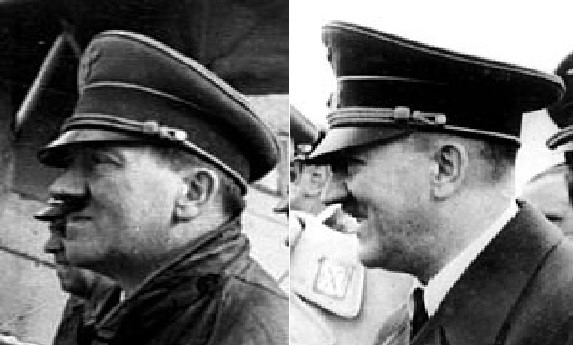
After the attempt on Hitler’s life at the Wolfsschanze on 20 July 1944, the Gestapo investigated the incident. Initial interrogations revealed that the plot had been organized by officers at the highest level. Hitler ordered the Gestapo chief to report the results of the investigation to him personally, bypassing Himmler, Müller’s immediate superior.
From that day on, Müller became the Führer’s confidant. His star had risen…
The Gestapo worked quickly. The main instigators were arrested, interrogated, and executed, including the first victim, Colonel Klaus von Staufenberg of the Reserve Army Headquarters, who placed an explosive device under the table in the room where the military leaders were meeting. He was shot, his body cremated and the jar of ashes taken to the Gestapo chief’s office. He flushed the ashes down the toilet.
When Goering inquired about the colonel’s fate, Müller replied that Staufenberg had disintegrated into elements. Goering laughed long and hard at the Gestapo’s black humor and presented him with a basket of wine and delicacies.
Hitler received lists of conspirators. After familiarizing himself with the long list, the Führer realized that if the Gestapo reached the end of the list in its repression, there would be no one left in the army to carry out his orders. Germany was already at war on three fronts and in this situation, every military commander counted. Hitler stopped Mueller and postponed the punishment of traitors until better times.
He was convinced of the Gestapo chief’s professionalism and loyalty and appreciated his tact and sharp mind. Muller, on the other hand, in private and frank conversations with the Fuhrer, saw in him not only the pathos politician that Hitler was in public, but also the possessor of a shrewd mind. Moreover, they had both been soldiers in the First World War, they had a common past and they understood each other. Having lost faith in the loyalty of his officers after 20 July 1944, Hitler never felt safe again. His circle of confidants was reduced to a few men. Müller became one of them.
***
THE SECRET OF THE BUNKER.
In March 1945, during a routine official visit to the Reich Chancellery, Gestapo chief Heinrich Müller was told that the Führer wanted to meet him urgently on a matter of particular importance.
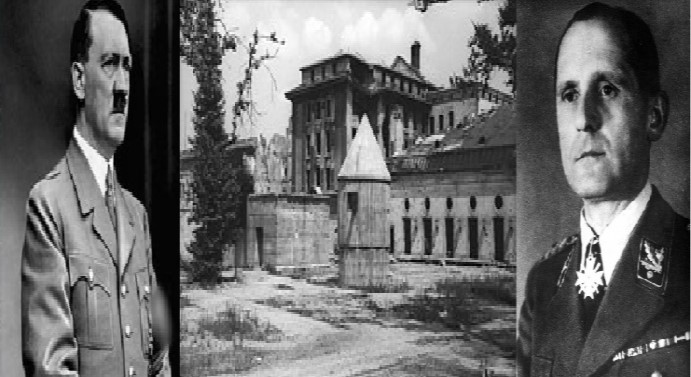
Hitler suggested that Müller take a walk in the Chancellery garden, away from the ears. The conversation was to be strictly confidential. At the beginning of the conversation, Hitler briefly outlined the critical situation on the fronts and expressed his opinion about the approaching end of the war, which he felt was not in Germany’s favor. He was depressed and for the first time expressed doubts as to whether he should move his headquarters to the mountains of Bavaria and continue the war in the hope of a miracle, or stay in Berlin and die a soldier’s death.
For the practical Müller, the drama of a public death was only acceptable in an Italian opera. He outlined his thoughts to the Führer, arguing that moving the headquarters would only prolong the agony by a few weeks. Müller advised Hitler to preserve his life, saying that his death would satisfy his enemies but bring unnecessary suffering to the German people, who were tired of the nightmare of war.
They both agreed that once the war was over, the West would find itself in a confrontation with Stalin, who was hatching an insidious plan to take over the whole of Europe, leading to a new war in which the Americans would inevitably take the Germans as allies.
Mueller suggested that the Führer use the escape plan developed by the General Staff in 1943, with adjustments to suit the situation. According to the Gestapo chief’s plan, the Führer would disappear, leaving a double in his place. The double was needed so that the pursuers could find his body and stop the search, giving Hitler time to hide in a safe place. Mueller asked Hitler not to take away hope in the German people and convinced him that the nation would always need such a leader.
Hitler never consulted anyone when making decisions. But the situation had changed. And he agreed with Mueller’s arguments. From now on, the head of the Gestapo had to be at headquarters. He was put in charge of the execution of the plan.
For the evacuation of the leaders of the Reich in 1943, 3 planes were built, each with a capacity of 50 people. By the end of the war, only one had been built and tested. The plane had a seat for Hitler with a catapult and an armored fuselage around him. The plane was tested by Hitler’s pilot, General Baur. The plane was hidden in a secret hangar in the southern Bavarian town of Pocking.
This four-engine Junkers Ju-290 was reported to the US Secret Service on 8 March 1945 by agent number K-28, who described in his report all the work being done in the hangar. Shortly after the aforementioned confidential conversation in the garden of the Reich Chancellery, the aircraft was moved to Hersching Airfield, 17 kilometers southwest of the city of Linz.
***
20 April 1945 – Hitler’s birthday, he turned 55. Eva Braun, his favorite woman, was brought to Berlin on a special flight from the Führer’s castle in the Bavarian Alps. Hitler celebrated his birthday in his headquarters, with all the military leaders present. Unnoticed by many that day was the visit of the Führer’s dentist and Reichsführer, General of the SS Medical Service, Hugo Blaschke. The dentist was ordered to collect his patients’ files and fly to Salzburg. There the files of Adolf Hitler and Eva Braun, Goebbels and his wife Magda, Göring, Speer, Ribbentrop, Himmler, and Bormann mysteriously disappeared and were never found. Without these documents, all attempts by the victors to identify the corpses they found, burnt beyond recognition, by their teeth, will remain unproven.
The next day, 21 April 1945, the first Russian shell exploded at the Brandenburg Gate. Hitler was furious – how could his military leaders have allowed this to happen? He called an emergency meeting attended by Field Marshal Keitel, Generals Jodl, Bole, Guderian, Krebbs, Koller, Bodenschatz, Vice-Admiral Voss, Göring, Himmler and Bormann. They all persuaded the Führer that Berlin had to be surrendered and suggested moving the headquarters to the Bavarian Alps.
Hitler knew the hopelessness of this plan before they did. The helplessness and defeatism of the generals drove him into a rage; orders were no longer being carried out, the troops were demoralized by the Russian offensive, and, above all, his generals stood before him demoralized. It was probably at this moment that Hitler remembered the list of traitors who had wanted him dead in 1944.
At the end of the meeting, he announced the evacuation of all headquarters staff to Berchtesgaden in the Bavarian Alps. About 80 people were to be evacuated and leave Berlin within 48 hours, taking with them tons of documents. The Reich Chancellery was in a frenzy of departure that day.
The military commanders who had attended the last war council also left Berlin. Among them were Göring and Himmler. Remaining at headquarters were Generals Krebs and Burgdorf, Vice-Admiral Voss, the diplomat and long-time friend of the Führer Walter Heuvel, Party Secretary Bormann, Propaganda Minister Goebbels, and several military aides. Gestapo chief General Heinrich Müller and his men also remain. No one will see him, but he will see everyone.
Hitler’s pilot, General Baur, will also remain in the Bet, in full view of everyone, until the last day. The Führer’s pilot’s presence was intended to reassure those present that the Führer was with them and to allay the suspicions of Bormann, who was hoping for a quick evacuation from the Reich Chancellery grounds along with Hitler. This was part of Mueller’s plan.
***
ESCAPE.
Hitler left the Reich Chancellery building with Bormann and Goebbels and his family for the bunker. That evening, Muller reported to Hitler that the plan was ready and recommended that they leave Berlin immediately, taking advantage of the confusion caused by the evacuation of the headquarters staff and the relocation of the Führer’s apartments.
At night, the Führer and his German shepherd “Blondie” went for a walk in the garden of the Chancellery, where the guards always turned off the lights and put the dogs away at such times. On this walk, Müller replaced Hitler with double. The Führer’s orderly, SS Major Heinz Linge, and the head of the personal guard, SS Major Hans Rattenhuber, assisted Müller, but they were only privy to a small part of the plan, each carrying out his task. Major Rattenhuber arranged and guarded for several men to move outside the Reich Chancellery. The strangers wore cloaks, their faces concealed by hoods.
In the brief minute of that exchange, the last conversation between the Führer and Müller took place. Hitler thanked the Gestapo chief for his service and help, and Linge handed Müller a bag. Later, in this bag, among bundles of Swiss francs, Müller would find a medal – Germany’s highest honor, with Hitler’s certificate. It was the Führer’s reward for the operation Müller was now to complete.
Trusted officers would escort Hitler to safety, from where a helicopter took him to the outskirts of Linz, to Hersching airfield, where his personal four-engine Junkers JU-290 was based.
In the hectic days that followed, Müller’s men quietly removed three more people from the Reich Chancellery: Eva Braun, her sister’s husband, SS General Hermann Fiegelein, and Hitler’s long-time friend, diplomat Walter Huevel.
The plane took off for Spain on the night of 26 April 1945. The next day, 27 April, it was landed at an airfield on a military base Reuss, south of Barcelona. The official report of the Spanish police officers who met the flight was accompanied by a statement listing a large brown sheepdog among the arrivals. The dog had always accompanied its owner on his travels.

After the German surrender, captured military commanders confirmed under interrogation that they had received no orders from Hitler’s headquarters after 22 April. Captured officers from Hitler’s headquarters and inner circle testify that they were disturbed by the change in the Führer’s face after the bombing of Berlin began. The Fuhrer rarely left his office. They attributed this to depression caused by the drama of the bombing of Berlin. It did not occur to any of them that they were looking at a different man.
The double was playing his part. Leaning over a map of Berlin, a pencil in his trembling hand, he uttered prepared phrases that showed his desperation. Goebbels, who had expressed the firm wish to die with the Führer in Berlin, was unaware of the double, so he became Mueller’s unwitting assistant in the game. Goebbels told visitors that the Führer was unwell and received them all.
The inaction and apathy of “Hitler” forced Göring to try to take command himself and negotiate a separate peace with the Americans and British. On 25 April, Göring announced over the radio to the German people that at this critical moment, he would replace the Führer and become Supreme Commander.
Göring justified his decision by referring to Hitler’s speech of 1 September 1939, in which the Führer had named him as his successor. Three days later, Himmler repeated his attempt to contact the Americans and the British.
There are no more fronts, communication has been lost, localized fighting is taking place in the suburbs of Berlin, and the remaining commanders are commanding soldiers at will.
29th April Muller receives word through his channels that the Führer is safe at his destination. It was time to end the operation. That night, the “marriage of Adolf Hitler and Eva Braun” took place in the bunker. The purpose of this action was to finally confuse the enemy and convince them that Hitler was in Berlin. For the formalities, an elderly Volkssturm chaplain, Walter Wagner, is brought into the bunker to marry the couple. The ceremony is hastily performed, after which the newlyweds retire to their quarters.
The rest of the night in the bunker is spent drinking to the health of the Führer and his wife. Everyone is drunk to the point of insensibility. Among the over-drunk guards lying on soldiers’ coats in the reception room are Party Secretary Martin Bormann and the commander-in-chief of the Wehrmacht troops, General Krebs. While the drunks are delirious with alcoholic dreams, the actress from the local theatre who played her last role at the “wedding”, is drugged and killed. Several SS men bring into Hitler’s office the body of one of the murdered, whose corpses had been piled up for days in an empty niche of the Reich Chancellery’s swimming pool. They have dressed the corpse in Hitler’s black trousers, grey tunic, and shoes. Both bodies are wrapped in soldiers’ blankets and left in the bedroom.
The next morning, 30 April, Müller explains to the double his final task: to go to the reception room and announce “The Führer’s Testament” to those present. Gustav Weber is calm for his life; he has been assured that the role of the dead Führer will be played by a corpse wrapped in a blanket and that he alone will be taken to a safe place to continue his mission.
The double will enter the reception room and announce to those present: “Burn my body so that it won’t be displayed in the Panopticon by my enemies. A few hours later, he will be drugged and a gun will be placed in the middle of his emotionless forehead. Around 3 pm, a soft shot is heard. Linge, who was one of several SS men in the Führer’s apartment, will announce Hitler’s suicide to those present in the bunker. The SS carried two bodies wrapped in blankets into the reception room.
Later, when interrogated, the prisoners claimed to have seen Hitler’s shoes and socks, and the hem of Eva Braun’s dress. None of them saw the faces of the corpses. All the work was done by SS men whom no one knew. In the courtyard, the corpses were doused with petrol and set on fire. Among those present were Goebbels and Bormann. The atmosphere in the bunker was one of general depression.
At nightfall, the burned remains of two bodies were taken by SS men to the crater of the exploded grenade and filled with earth. They will also take the body of the double into the yard and bury it. They’ll bury it shallowly so that it can be found quickly. The names of the SS men who carried the bodies, burned them, and buried the remains will remain unknown to all who saw them. These SS men would not be found among the prisoners, would not be recognized among the dead, and the prisoners would not be able to talk about them during interrogation.
The Gestapo chief was a good chess player. Muller always calculated his moves in advance. The general not only left the Russians with the body of Hitler’s double. He also left them with a riddle. In the evening of the same day, 30 April, General Krebs would inform the Soviet command of Hitler’s death and his willingness to negotiate. Soviet artillery fire was temporarily halted.
At night, Müller, having accomplished his mission, would take advantage of the temporary lull and disappear. A single-seat plane with a reliable and loyal pilot would be waiting for him at the agreed location. The plane will need less than 100 meters to take off and disappear into the night sky.
***
On the morning of 1 May, the Wehrmacht’s last supreme commander, General Krebs, entered into negotiations with the Soviet command and presented the terms of the armistice. A few hours later, news reaches the bunker that the Russians have rejected Krebs’ terms and are demanding Germany’s unconditional surrender. The general put a bullet in his temple, preferring death to dishonor.
Walter Wagner, a People’s Militia chaplain who married the couple in a Berlin bunker, dies the next day in mysterious circumstances. After the chaplain’s death, the Goebbels are the only witnesses to the wedding. They will order the doctor to kill their six children with a lethal vaccine, after which they will kill themselves with poison. Their bodies are cremated and their remains are buried in the grounds of the Reich Chancellery.
Party Secretary Bormann, having learned of the buried body of Hitler’s double on the last day, will attempt to copy the game by ordering his guards to bury another body dressed in his uniform. Bormann’s documents will be placed in the uniform’s pocket, and the corpse’s face will be disfigured beyond recognition. But the forgery will be very crude.
Martin Bormann, this last witness to the wedding, would die as the group fled the besieged Reich Chancellery on the night of 2 May 1945. Witnesses to his death would reveal under interrogation that Bormann and Hitler’s doctor, Ludwig Stumpfeger, died in an armored vehicle that a direct hit from a shell had destroyed.
Experts would later find several serious errors in the marriage certificate, which would undermine all attempts to present this forgery as a genuine document authenticating the signatures of Hitler and Eva Braun.
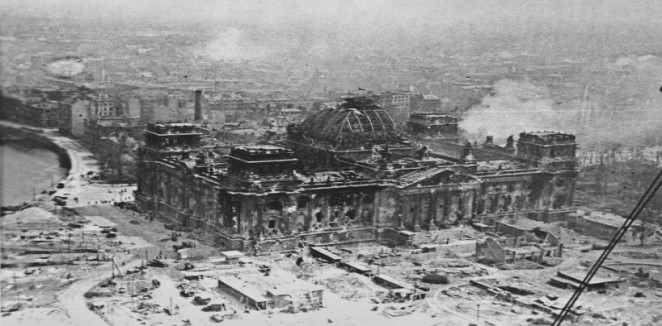
***
AND AGAIN VILLA “VINTER”.
In early March 1945, the commanders of three submarines U-1235, U-880, and U-518, patrolling the waters of the North Atlantic, were delivered by special courier secret order from the headquarters of Fuhrer Adolf Hitler. The captains of the submarines were ordered to move to the waters off the island of Fuerteventura, part of the Canary Islands archipelago, by April 28 to carry out a top-secret mission. They were instructed to make the crossing in an underwater position, to maintain absolute silence in the air, and to follow instructions carefully. Upon arrival at the target, the submarines were to lie on the bottom and await further instructions. On the agreed night, a signal was sent from the tower of the villa to the sea ordering the submarines to enter the underwater cave of Puerto de Cabras Bay.
Just south of Barcelona is the military base of Reus. In the last days of April 1945, a heavy long-range airplane landed at the base’s airfield. Here the passengers were transferred to a lighter Junkers Ju-52. The next stop on their journey was the island of Fuerteventura. In the late twilight of the same day, April 29, the plane landed on the runway of Villa Winter. A sumptuous dinner awaited the arrivals and a night’s sleep in clean beds, without the howl of sirens or the rumble of bombs.
The next day, the new arrivals were separated: Hitler, Eva, and the German shepherd dog “Blondie” became passengers on the submarine U-518, commanded by the young but experienced Lieutenant Hans Werner Offerman.
Sister Eva’s husband, SS General Hermann Figelein, and with him diplomat and longtime friend of the Führer, Walter Heuvel, and the head of the Latin American section of the German Foreign Ministry, Willy Cohen, who joined them on Fuerteventura, became passengers on U-880.
Because of the passengers’ desire for maximum comfort, the crews of the two boats were greatly reduced, and the sailors removed from them were placed on a third submarine, U-1235, to cover the first two.
Over the next two days, the forward torpedo bunkers of the two submarines were loaded with valuable cargo from Cadiz. The empty compartments where the crew members lived were filled with delicacies, canned goods, and other items. The refugees had sixty days and five and a half thousand miles of sailing ahead of them.
The submarine U-880 was the first to leave. She was moving at top speed, her passengers to prepare a safe arrival for the chief guest.

On the night of July 23, the submarine surfaced off the coast of Argentina, in Mar del Plata Bay. A tugboat was waiting there. Boxes with valuables and documents were loaded onto it, after which the submarine sank, now forever. As the tugboat slapped to shore, Herman Figelein showered and shaved off his two-month-old beard. A black limousine and a military truck covered with a tarp were waiting for them on shore. A short ride to the airstrip, and a lightweight Condor took them to a small town in Patagonia. And there it was – a measured bourgeois life, Bavarian beer, sausages, clean sheets, and silence … As if the war had never happened.
The next few days were filled with preparations. On the agreed night in the bay of Mar del Plata, everything happened again. The two arriving submarines lay on the bottom next to the first, the cars took the new passengers and rolled to the runway. The plane took off safely into the night sky, heading for the small town of San Carlos de Bariloche, hidden in the foothills of the Argentine Alps…
© Copyright: Вальтер Мария, 2019
Свидетельство о публикации №219111001509
***
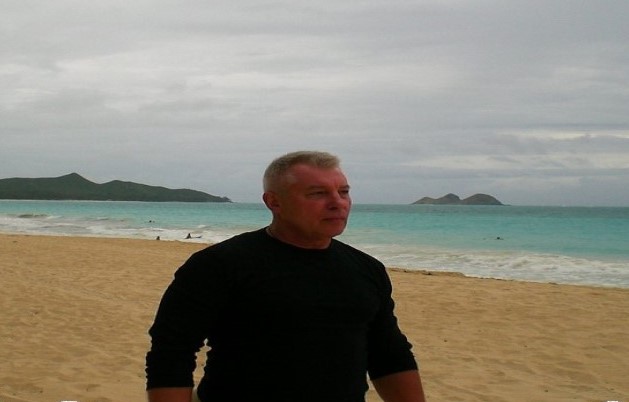
COMMENTS.
1) Most of the senior officers in the German army belonged to old noble families and were arrogant to the orders of Hitler, the soldier turned their commander-in-chief. As long as the war brought victories, this dislike of theirs was not particularly noticeable. But when the black streak of failure began, some Reich generals began to secretly seek an alliance with the British and Americans. But Western leaders refused to negotiate, demanding that Hitler be replaced by a more pliable politician. The stubborn dictator himself did not want anyone in his post, considering himself the chosen one of Providence. All this led to a conspiracy and an attempt on Hitler’s life in July 1944.
According to the memoirs of the Führer’s adjutant, SS Major Heinz Linge, in the last year of the war Hitler’s orders were ignored by military commanders, and all defeats and failures caused by failure to fulfill orders were attributed to him. Traitorous generals drove Hitler into a frenzy, he lost faith in his command. This was one of the decisive factors that changed his decision to die for Germany. The country no longer understood him.
2) In a confidential conversation in the courtyard of the Reich Chancellery on a cold March afternoon, Gestapo chief Muller persuaded Hitler to save his life, assuring him that he, the Führer, would be in demand by the nation when everything calmed down. Müller reminded Hitler of the facts of betrayal, naming the names of those who had tried to negotiate with the enemy. He convinced Hitler that the traitors would only rejoice at his death, and that bad news would plunge the German people into black mourning and depression. Müller persuaded the Führer not to deprive his people of hope.
Hitler had changed a lot since the last assassination attempt on his life, and his adamancy in his decisions was no longer the same. Especially with the realization that the war is lost and the end is near, he agreed with Mueller’s arguments.
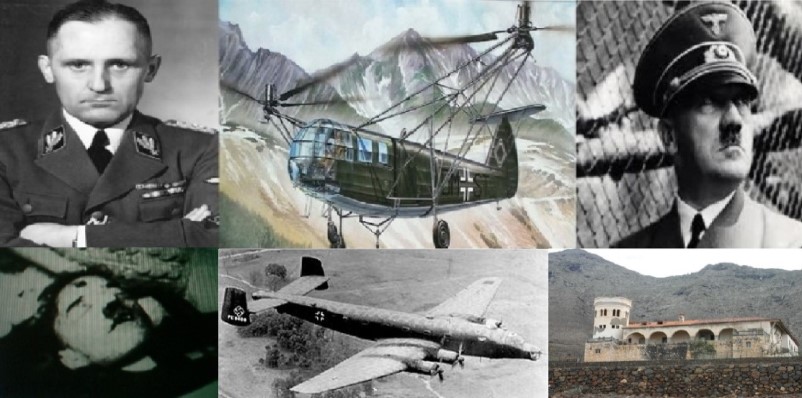
Be First to Comment